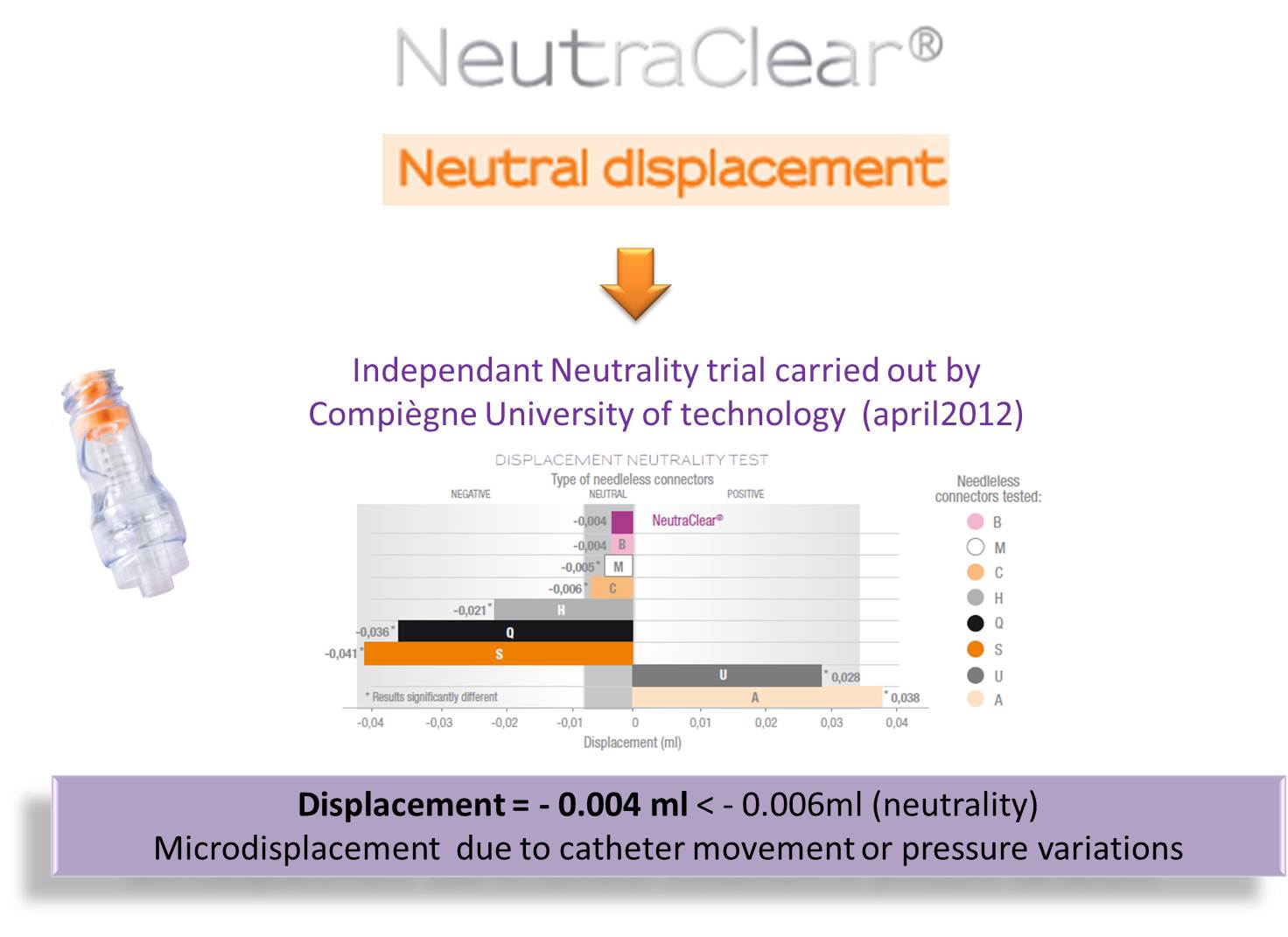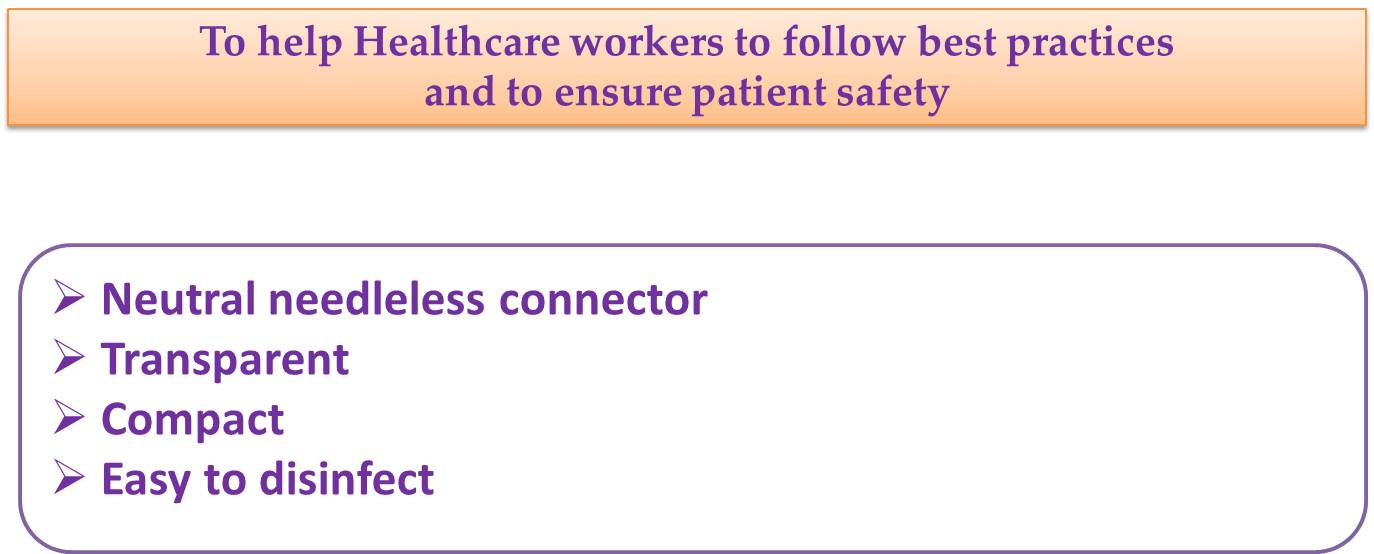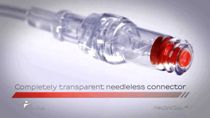


Related Literatures & Clinical Studies:
(1) CDC 2011 : «Potential explanations for outbreaks include (...) inadequate flushing of the device due to poor visualization of the fluid flow pathway in opaque devices».
(2) Jarvis W. 2010 : «The ability to visualize the internal surfaces of the needleless connector helps the clinician determine if flushing of the
needleless connector is complete (...) A transparent needleless connector is preferable to one that is opaque».
(3) CDC 2011.
(4) Sharps Safety 2009 ; Infection Control Today 2005 : «The split-septum products did not adress the problem of catheter occlusion».
(5) SHEA 2008 : «Do not routinely use positive-pressure needleless connectors».
(6) FDA 2010 : «The FDA is requiring (...) to conduct surveillance study on positive displacement needleless connectors to assess (...) a higher rate


